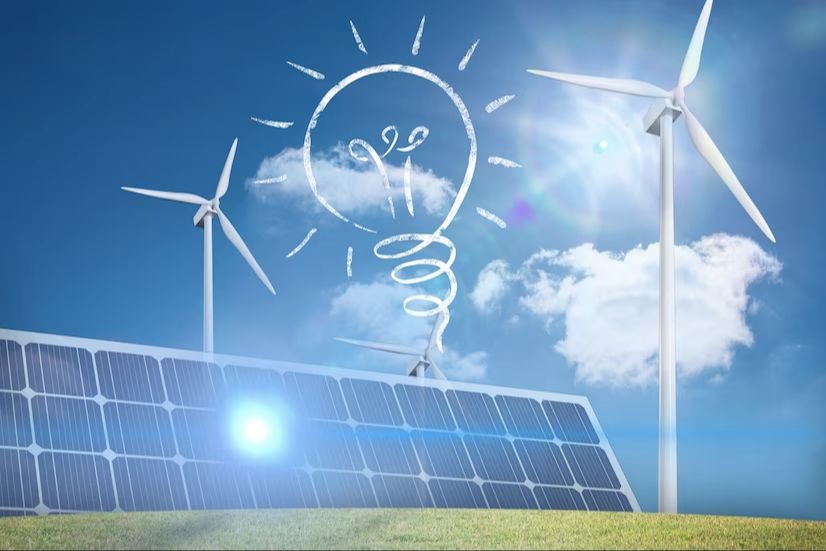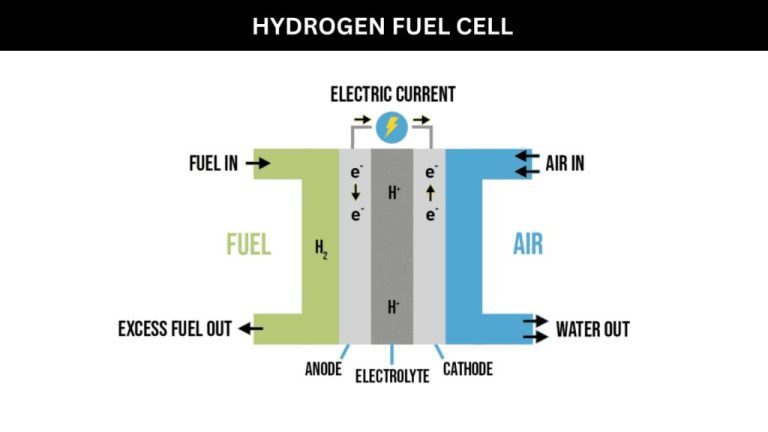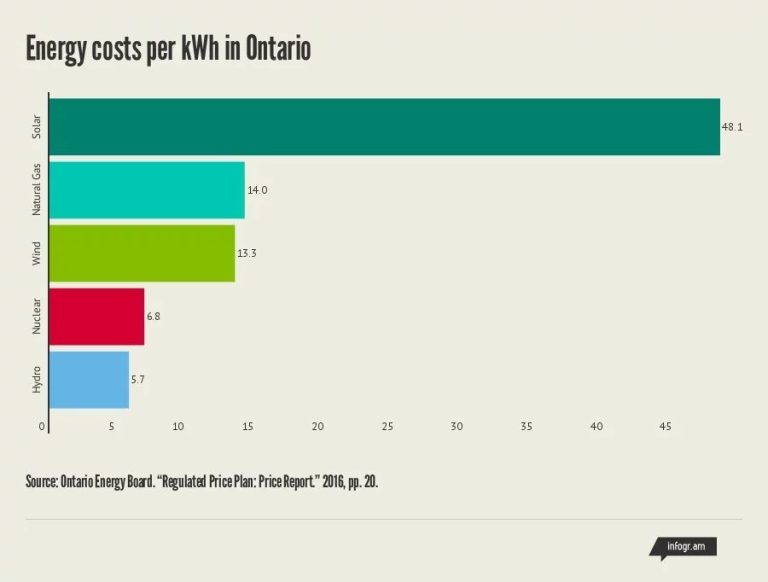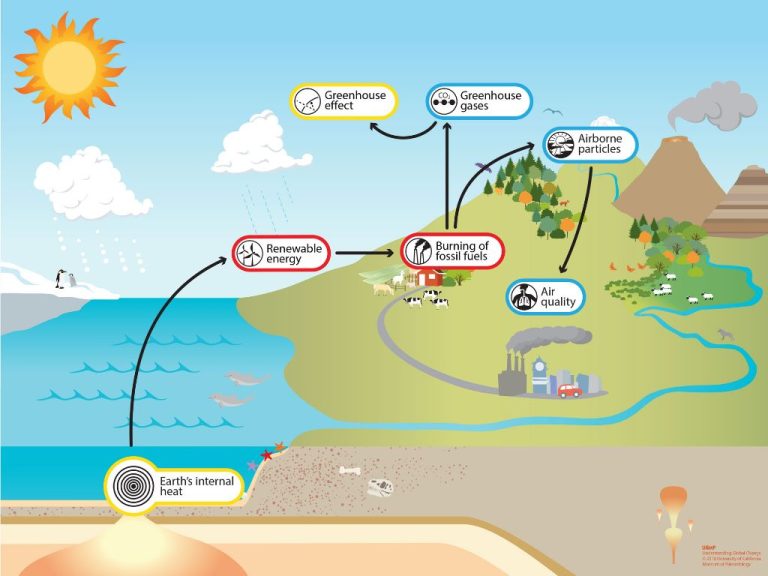What Is One Of The Biggest Concerns With Renewable Energy?
Intermittency

One of the biggest concerns with renewable energy like solar and wind power is their intermittent nature (1). Unlike traditional sources like coal, natural gas, or nuclear, the sun doesn’t always shine and the wind doesn’t always blow. The availability of these renewable resources can fluctuate significantly in the short-term, from minute to minute, hour to hour, and day to day (2). This creates challenges for grid operators who have to constantly balance electricity supply and demand.
When solar and wind farms produce less energy than expected, other power plants have to ramp up quickly to make up the gap. However, relying too much on fossil fuels to fill in intermittency can undermine the environmental benefits of renewable energy. The variability of solar and wind can also cause grid instability and reliability issues if not properly managed, impacting both producers and consumers (3). Therefore, solving the intermittency problem is crucial for scaling up these renewable technologies.
(1) https://energyx.com/resources/what-is-intermittency-in-renewable-energy/
(2) https://www.bpa.gov/energy-and-services/efficiency/demand-response/intermittent-renewable-energy
(3) https://blogs.scientificamerican.com/plugged-in/renewable-energy-intermittency-explained-challenges-solutions-and-opportunities/
Storage
One of the biggest challenges with renewable energy like solar and wind is the need for energy storage. Unlike fossil fuels which can provide consistent power generation, renewables rely on natural resources that fluctuate. For example, solar panels only generate energy when the sun is shining. Energy storage like batteries is needed to store the energy for use when the sun is not shining (Aràner 2023).
Large scale batteries are expensive and have technical limitations for how much energy they can store. According to a GAO report, utility-scale lithium-ion batteries can cost up to $2,000 per kW hour of storage capacity. Thermal storage and pumped hydro storage are lower cost options but have geographic limitations and environmental impacts (GAO 2023).
Improving energy storage technology is critical for enabling greater adoption of renewables. Lowering costs, extending storage duration, rapid recharge rates, and geographic flexibility are key areas for innovation (Azonano 2023). Until major advances in storage are achieved, the intermittency of renewables will continue to pose challenges to replacing fossil fuel electricity generation.
Cost
One of the biggest concerns with renewable energy sources like solar and wind is the high upfront infrastructure costs compared to fossil fuels [1]. Building large-scale solar farms or wind turbines requires major capital investments for land, equipment, batteries, and transmission lines. According to IRENA, the global weighted average levelized cost of electricity (LCOE) for solar PV fell by 85% between 2010 and 2019, reaching around $0.068 per kilowatt-hour (kWh) [2]. However, this is still higher than the average LCOE for fossil fuel power plants, which ranges from $0.05 to $0.17 per kWh [3]. While solar and wind costs are dropping rapidly, the high initial investment required continues to be a barrier, especially for developing countries.
Transmission
One of the biggest concerns with renewable energy is the need for new transmission infrastructure to transport the energy from where it is generated to where it is consumed. Many of the best renewable energy sources, like wind and solar, are located in remote areas far from major cities and industrial centers. Harnessing these resources requires building long-distance, high-voltage transmission lines to connect renewable energy projects with the existing power grid.
For example, large wind farms are often built in the Midwest region of the United States where strong, steady winds blow across the plains states. But much of the energy demand is on the coasts, thousands of miles away from these wind resources. Similarly, solar power installations are most economical in the sunny Southwest, while the biggest electricity consumers are in other regions. Transporting the renewable power from source to demand requires major investments in new transmission capacity.
Building long-distance transmission lines is extremely expensive, time-consuming, and faces regulatory hurdles. Permitting and siting new transmission routes has proven difficult, with concerns about environmental impacts, land use, and public opposition. Upgrading the grid to handle large amounts of intermittent renewable energy also requires advanced power electronics and storage capabilities. Overcoming the transmission bottleneck will be critical to scaling up renewables and delivering clean energy to population centers.
Land Use
One of the biggest concerns with renewable energy, especially wind and solar, is the amount of land required to generate electricity compared to traditional fossil fuel power plants. According to a recent Brookings Institute study, wind and solar farms require at least 10 times more land area per unit of energy produced than coal or natural gas plants. This is because wind and solar are more diffuse energy sources that need to cover larger areas to capture the same energy output.
Fossil fuel plants can produce a lot of electricity in a compact area, while renewables like wind and solar need to spread out over more acreage. For example, to produce 1,000 megawatts of power, a coal plant needs about 20 acres of land, a natural gas plant 25 acres, a solar photovoltaic facility anywhere from 1,000 to 4,000 acres, and a wind farm about 60,000 acres according to Our World in Data. So the land use footprint of renewables can be 50-200 times greater per unit of energy.
Reliability
One of the biggest concerns with renewable energy like wind and solar is reliability – the ability to meet electricity demands at all times. Unlike fossil fuel plants which can be dispatched on demand, renewable resources like wind and sunlight fluctuate based on weather and time of day [1]. This intermittency means renewable energy may not always be available when needed [2].
To ensure reliability, renewable energy requires methods to store and dispatch power when the sun isn’t shining or wind isn’t blowing. Battery storage can help mitigate reliability issues, but currently remains expensive. The variability of renewable energy also requires grid operators to balance electricity supply and demand in real time [3].
However, technical solutions like improved forecasting, grid interconnections over larger areas, and “overbuilding” renewable capacity can enable high penetrations of renewable energy while maintaining reliability. With proper planning and grid management, renewable energy can be a dependable source of electricity.
Scalability
One of the biggest concerns with renewable energy is the ability to scale up renewables fast enough to meet the rapidly growing global energy demand, especially in developing countries. Renewable sources like solar and wind power can be installed practically everywhere simultaneously and see capacity grow much faster than traditional energy sources like nuclear or coal power plants.
According to a report by the International Finance Corporation (IFC), renewables offer a viable path forward in meeting growing energy demand globally. The modularity and distributed nature of renewable generation means capacity can be added incrementally in a decentralized way. This allows renewables to scale rapidly to keep up with energy demand growth.1
Furthermore, a 2018 analysis found that renewables can be installed and scaled much faster than nuclear power plants. While nuclear plants can take over a decade to build, solar and wind farms can be constructed within months or a few years. This allows renewables to scale capacity faster to match demand growth.2
Regulation
The renewable energy industry faces a complex web of regulations, subsidies, and policies that vary widely across countries and states. One of the biggest challenges is a lack of clarity and stability in energy policies and regulations, which can significantly hamper renewable energy projects and investments (Addressing Policy and Regulatory Challenges in Renewable Energy Projects). Frequent and unpredictable changes in incentive programs, tax credits, and policies create uncertainty and risk for companies investing in renewable technology.
In the absence of long-term, supportive policies, the high upfront capital costs of renewable projects can be prohibitive. Subsidies and incentives play a crucial role in accelerating renewable energy deployment, but reliance on temporary measures may discourage sustainable growth (Renewable energy – new challenges require a bespoke approach to risk allocation). Navigating the complex regulatory landscape requires extensive legal and policy expertise.
There are also regulatory barriers that prevent equitable access to renewables. Marginalized communities face additional challenges in taking advantage of incentives and participating in renewable energy markets. For example, tribal nations encounter jurisdictional disputes and a lack of legislative authority that limits their solar development (Addressing Regulatory Challenges to Tribal Solar Deployment). Reform is needed to ensure that regulations do not impose unfair burdens or exclude certain demographics.
Wildlife Impact
One concern with renewable energy like wind and solar is the potential impact on wildlife habitats and migration patterns. Large-scale wind and solar projects can interfere with habitats and disrupt routes that wildlife take when moving between areas. According to the National Wildlife Federation, while renewable energy is better for wildlife than fossil fuels, it still results in habitat loss and fragmentation from land disturbance and roads built for construction and maintenance (https://www.nwf.org/Our-Work/Climate/Climate-Change/Renewable-Energy).
Specifically for wind power, turbines can injure or kill birds and bats that fly into the rotating blades. One analysis by North Carolina State University found that wind turbines kill between 140,000 to 328,000 birds each year in the U.S. (https://cnr.ncsu.edu/news/2019/11/renewable-energy-wildlife-conservation/). The spinning blades also create noise and vibration that can disturb wildlife behaviors. Careful site selection and updated turbine designs can help mitigate these impacts.
For utility-scale solar facilities, the panels take up significant land area that could otherwise be habitat for desert tortoises, insects, and plants. Fences around solar sites also block free movement of wildlife. According to the Endangered Species Coalition, 17 federally threatened and endangered species have been affected by utility-scale solar projects (https://www.endangered.org/how-renewable-energy-impacts-biodiversity/).
Public Opinion
While renewable energy has grown in popularity over the years, one of the key challenges is overcoming NIMBYism (Not In My Back Yard) and lack of public support in local communities. According to a 2023 survey by Pew Research Center, 69% of Americans say the country’s priority should be developing renewable energy sources like wind and solar power. However, specific projects often face opposition from local residents. According to the poll, 45% of U.S. adults would oppose a wind turbine project within 5 miles of their community. Similarly, 39% expressed opposition to a solar farm project nearby. Even though most Americans support renewable energy broadly, they are less enthusiastic about having projects developed near their homes.
To gain public support, the renewable energy industry needs to engage communities early and demonstrate the benefits of projects. Allowing for local input, mitigating concerns like noise or viewshed impacts, and providing community ownership or funding opportunities can help overcome NIMBY attitudes. More education is also needed on the reliability, safety, and job creation potential of renewable projects. With the right approach of transparent communication and community engagement, the industry can build the public goodwill needed to advance the transition to clean energy nationwide.




